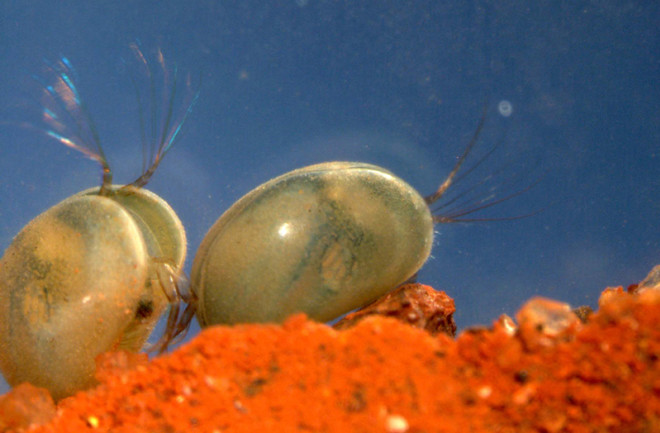German biologist Renate Matzke-Karasz beamed at the virtual fossil slices on her iPad. “There are definitely internal structures in this animal, and perhaps even sperm!” she emailed retired Australian micropaleontologist John Neil, wanting him to be the first to know. It would take five more years to confirm, but Matzke-Karasz was actually looking at the oldest petrified sperm in the world.
World's Oldest Sperm Discovered in Ancient Crustacean
Ancient ostracod had long, and long-lived, sex cells.
By Karen Emslie
Apr 30, 2015 5:00 AMNov 14, 2019 8:54 PM

Ostracods are a type of crustacean, similar to shrimp, that thrive to this day. | Renate Matzke-Karasz
Newsletter
Sign up for our email newsletter for the latest science news
0 free articles left
Want More? Get unlimited access for as low as $1.99/month
Stay Curious
Sign up for our weekly newsletter and unlock one more article for free.
View our Privacy Policy
Want more?
Keep reading for as low as $1.99!
Already a subscriber?
Find my Subscription
More From Discover
Stay Curious
Subscribe
To The Magazine
Save up to 40% off the cover price when you subscribe to Discover magazine.
Copyright © 2025 LabX Media Group
